National Parks are a natural home for us here at Hedonistic Hiking. We are drawn to the unspoilt wild landscapes, the fascinating flora and fauna and the interesting history of these protected areas. Here we take a look at three of our favourites.
Parco Naturale Tre Cime – Italy
First known as the National Park of the Sesto Dolomites, this park changed its name in 2010 to reflect the three peaks which, by then, had become instantly recognisable to a global audience. This is one of seven natural parks in this northern-most region of Italy known as Trentino- Alto Adige. Until 1919 this area belonged to the Austro-Hungarian empire and nowhere is the cultural mix between the German and Italian influences more evident: in the language, the gastronomy, architecture and even the personality of the population. Trentino-Alto Adige is one of the autonomous regions of Italy – and within the region, there are two autonomous provinces. Covering an area of 11,635 hectares, the park is composed above all of rocks, stony ridges and debris. In spite of this harsh terrain, many flowers thrive such as crocuses, bell flowers, gentians and orchids. As for the fauna badgers, martens, deer and woodpeckers may often be spotted.
Scars from the first World War are a unique feature of this National Park. The area was the site of fierce fighting between Italian and Austrian forces for over two and a half years. Not only did soldiers on both sides face a terrifying enemy, but freezing winters and the precipitous terrain added to the brutality of the campaign. Still today you might see bullet-holes in the rocks or rusty shells and intricate networks of military tunnels and trenches still exist.
Our Austria and The Dolomites tour brings us here the end of the week and we enjoy an epic circuit of the park on the final day, hiking amongst these soaring peaks and beautiful alpine blooms.
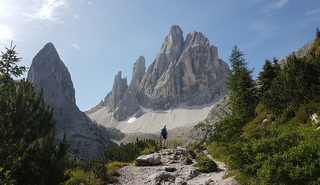
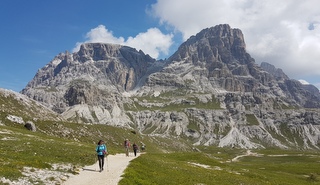
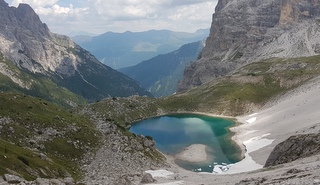
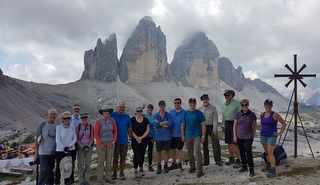
Parco Nazionale d’Abruzzo, Lazio e Molise – Italy
The region of Abruzzo in Central Italy is unusual for having three National Parks. The first is the Parco Nazionale del Gran Sasso e Monti della Laga and is one of Italy’s largest. It is home to the highest peak in the Apennines, the Corno Grande, as well as to wolves, chamois and royal eagles. The second is the Parco Nazionale della Majella, home to the second highest Apennine peak which is Monte Amaro. The third park, known as the Parco Nazionale d’Abruzzo, Lazio e Molise is the oldest of the three, with the first proposal to establish a National Park here being drawn up in 1917. The area of the park today is almost 50,000 hectares and the predominant tree is beech which covers 60% of the area and provides a stunning display of colour throughout the whole year. The most well-known flower of the park is the rare “lady’s slipper”, a yellow and black orchid.
One of the rare features of this National Park is the small population of Marsican Brown bears. They are naturally shy and timid creatures usually more active during the hours of dusk and darkness, which makes them hard to spot. They have no natural predator but modern roads and railways, poaching and toxic substances have all contributed to their dwindling numbers. The bear is the symbol of this National Park, although wolves, chamois and deer can also be found here. There is an Association for the Conservation of the Marsican Bear which works hard to protect their habitat and to educate local people about their vulnerability.
Our Wilds of Abruzzo tour takes us to all three of these National Parks and the area is truly a walker’s paradise. Although we have not personally been lucky enough to see one of the bears, many of our Abruzzese friends send us pictures which we always love to see.
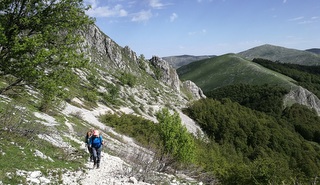
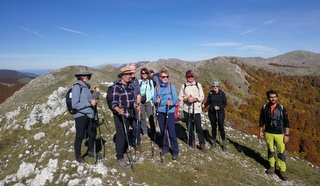
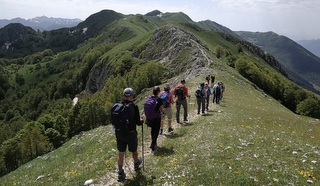
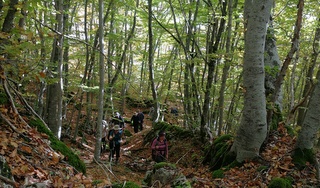
The Alpine National Park – Victoria
The 646,000 hectare Alpine National Park is located in north east Victoria and is the largest in the state, covering much of the higher areas of the Great Dividing Range in Victoria. It includes Mount Bogong which stands at 1,986 metres and the woodlands and grasslands of the Bogong High Plains. The park’s north-eastern boundary lies along the border with New South Wales, where it meets the Kosciuszko National Park. Traditional Owners travelled to this Alpine area for thousands of years, and had a deep understanding of its flora, fauna, and seasonal changes. Groups visited the Alps in summer to hold ceremonies and gather the nutritious bogong moths that live in the rocky crevices. The Bidawal, Dhudhuroa, Gunai – Kurnai and Nindi-Ngudjam Ngarigu Monero identify the Alpine National Park as their Traditional Country.
With European settlement came agricultural activity in the region, and quotas of cattle were allowed to graze on the High Plains during summer. Remnants of this lifestyle can be seen in the unique Cattlemen’s Huts which still exist and which were built for storage and shelter. We see a number of these historic huts on our Hiking the Victorian Alps tour and our Alpine Walking Weekend, along with remnants of the gold mining industry for which the area also became famous.
The Alpine National Park has the greatest range of flora and fauna of any national park in Victoria, with more than 1100 native plant species, and a variety of hardy animals such as the smoky mouse, spotted tree frog and the rare mountain pygmy-possum. It finally came into being in 1989, forty years after the idea for a National Park here was first proposed.
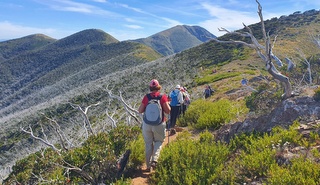
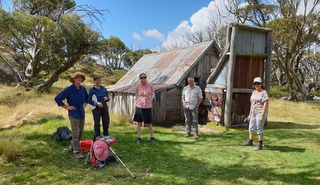
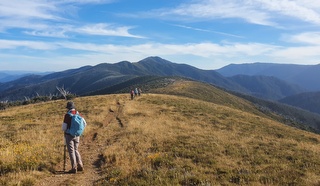
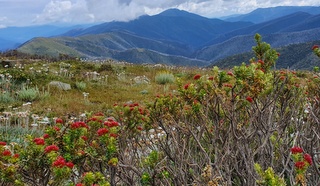
If you’d like to join us on any of the hikes mentioned above in 2022, then get in touch now!
